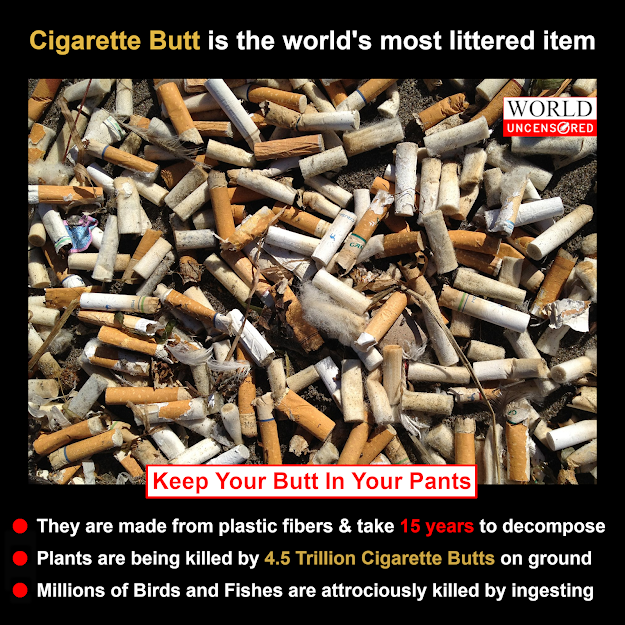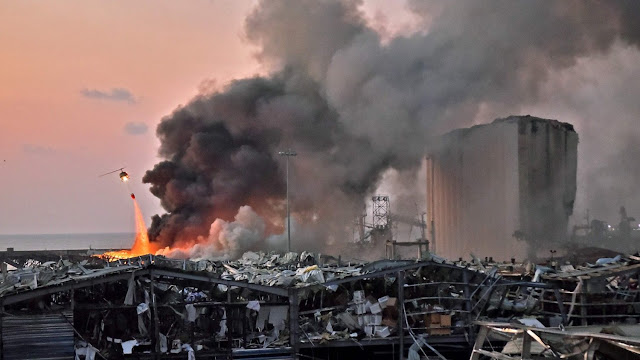Cigarette Butts: Most Littered Item In The World
Thousands of smokers don't think twice about leaving a trail of cigarette litter behind them. A good number of people still think cigarette butts are biodegradable
because the filters are cotton, but this couldn’t be further from the
truth.
Cigarette filters are actually made of cellulose acetate, a synthetic compound derived from the acetylation of the plant substance cellulose and they capture over 4,000 chemicals that are introduced into the environment just by being tossed.
Cigarettes are often littered within 10 feet of a permanent ashtray. Now
that most buildings do not allow smoking inside, the problem of
discarded butts on sidewalks, entryways and in courtyards is increasing.
Cigarette butts discarded in parking lots, along sidewalks and in street gutters miles from the coast inevitably make their way through storm drains, creeks and rivers to the beach and the ocean. A single butt in just one liter of water can poison and kill a fish.
The 'Filter' cigarettes :
1950, the year when researchers revealed how smoking was
linked to certain types of cancer. That's when filters came into
picture. But a "Filtered Cigarette" is still an unsolved case.
“The filter is really a fraud,” said Dr. Thomas Novotny. “It’s simply a marketing tool.”
In reality, while filters did block some
toxins, they also made cigarette smoke smoother to inhale and that
encouraged smokers to puff more frequently. Filters also altered the way tobacco burns, actually increasing some toxins in the smoke.
With
filtered cigarettes, rates of the most common type of lung cancer
caused by filterless smoking decreased. But rates of another type of
lung cancer adenocarcinoma increased.
But Elizabeth Smith, the US-based tobacco policy expert, says
biodegradable filters still contain toxins that could take a long time
to degrade. And smokers might feel "permitted" to litter biodegradable
filters, she adds, which could make the problem worse.
Some solutions :
Cigarette butts do damage far beyond the plastic pollution left in our
environment. Once littered they leach toxic chemicals—including acetic
acid, hexamine, arsenic, and chromium—into our water table, where these
chemicals can remain for as many as 10 years and can be poisonous to the
fish and wildlife that ingest them.
One cannot ignore this. All we need to do is take steps to save the environment. The first step will be raising awareness that cigarette butts are an
environmentally harmful litter item that needs to be properly disposed
of.
Despite scientific awareness of the issue of cigarettes and plants for
over 100 years, this remains an under-researched topic. But given the
importance of plants as our primary producers of food, not to mention
their role in making our environment more pleasant, there is clearly a
need to reduce cigarette butt litter.
The tobacco and paper in cigarettes will break down, so those can be composted. But the filters contain a plastic, and that can take years to decompose. Yet if the butts are carefully processed, the cellulose acetate can be used to make things such as park benches and pallets. Recycling companies are also refining their processing methods to create higher-end plastic products.
Companies taking initiative :
Several organizations and websites are addressing the issue of cigarette butt waste around the world.
Some are mentioned below:
and many more...






Comments
Post a Comment